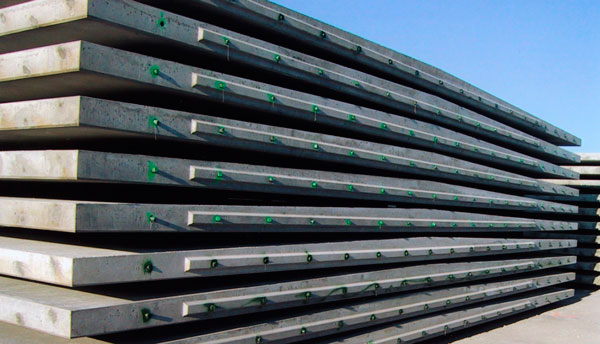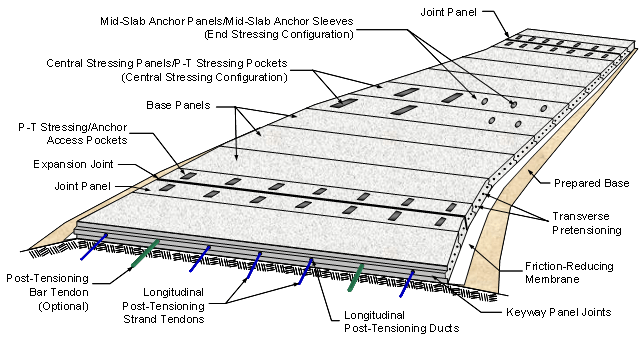
PCI and Federal Highway Administration (FHWA) have worked through the consensus process to build guidance for owner agencies for determining the appropriate applications for precast concrete pavement systems (PCPS).
These documents describe the benefits of PCPS for the traveling public realized through reduced traffic disruption due to:
- speed of construction,
- improved durability,
- improved safety, and
- all-weather construction
Prestressed Precast Concrete Panels (PPCP) are generally provided in sizes to match the width of one, two, or three lanes of the pavement permitting one or multiple lanes of an existing pavement to be reconstructed at one time, depending on site clearance constraints. The precast panels are commonly oriented perpendicular to the roadway centerline, and may also include one or both shoulders. In general, the panels are pretensioned in the longer direction during fabrication, and post-tensioned together in groups longitudinally, in the direction of traffic, to act as continuous slabs after installation. In some applications, the panels can be posttensioned together in both directions during construction in addition to plant pretensioning. Regardless of the configuration, it is important that the prestressing is provided in both directions if the maximum benefits of prestressing are to be realized. The panels are installed on a prepared base, posttensioned together, and opened to traffic. The below shows a schematic view of a typical PPCP.
